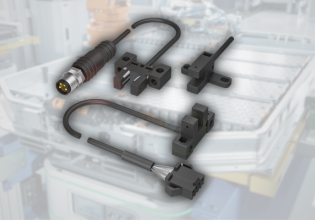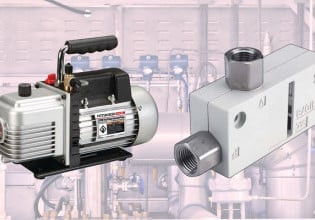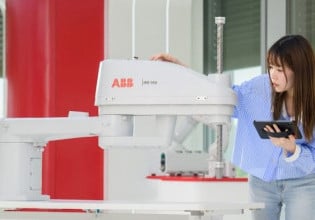Pressure Unit Conversion Calculator
Pressure creates the driving force for industrial pneumatic and hydraulic systems. Many comparable units are presented in both the metric and imperial systems, depending on the industry.
Enter an original pressure value and original unit system:
Select up to two output units and click 'Calculate' to view equivalent pressure:
Pressure Conversion
Pressure conversion allows fluid systems to interchange between convention systems. Most often, the units of pascals (Pa) and pounds per square inch (psi) dominate the hydraulic and pneumatic engineering landscape. Other units are used for atmospheric data analysis, including atmospheres, bar, and inch/mm columns of mercury or water.
Metric prefixes are often used for very large values of pascals, with kilo, mega, and giga pascals being common in many applications.

Pressure Sensor with digital outputs and adjustable upper and lower limits.
Pressure is created by the collision of fluid molecules against the sides of an enclosed container. The atmosphere of the earth could even be considered a ‘container’ in this context, where air will always exert pressure on every object.
Two conditions are required for pressure to exist:
- There must be fluid molecules which can take the shape of a container (i.e. liquid or gas)
- The molecules must have kinetic energy (motion). The only condition in which there is no kinetic energy is a theoretical absolute zero.
Because of these two conditions, practically every liquid and gas under containment on earth will exert pressure.
Compressibility in Fluids
If the temperature rises, so will pressure. Gasses are far more susceptible to increases in pressure due to a rise in temperature and are considered ‘compressible’. Compressors can decrease the volume of air and place it in a storage tank for applications from air tools to scuba tanks. When the air is drained from the tank, it is refilled by the air compressor.
Hydraulic fluid and water, although slightly compressible, will hold their volume far more consistently, so while a pump can create a large amount of fluid pressure to move incredible load masses, it cannot be stored in a tank in any sufficient volume. Therefore, a pump must be continuously running to charge any hydraulic system.
The accepted baseline standard of ‘gauge’ pressure measurement is one atmosphere, given as a unit of its own or as the equivalent air pressure measurement of an open system at sea level. This is approximately equal to 14.7 psi, or about 101,300 Pascals (Pa). If the pressure rises from this 0 gauge level, the system is ‘pressurized’, indicated by a positive pressure value. If the pressure falls below 1 atmosphere, this is considered a ‘vacuum’ system, represented as negative pressure values.
In an alternative system called ‘absolute’ pressure measurement, a complete absence of air molecules is the baseline ‘zero’ pressure. Therefore, a vacuum will be represented as any pressure below 14.7 psi (101,300 Pa) and positive pressure as any value above those same values.
Gauge pressure is the one used the most often. The main difference in application between these two systems is that absolute pressure ignores the ambient sea level pressure, so when two or more closed systems operating at different altitudes or ambient pressures must share similar data, it would be wise to use an absolute pressure system.
Related Content:
Textbook
- Mechanical Pressure Elements
- Electrical Pressure Elements
- Pressure Switches
- What is Hydrostatic Pressure?
Articles






